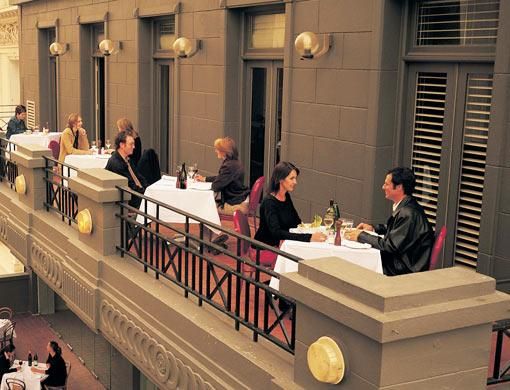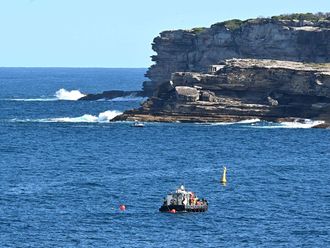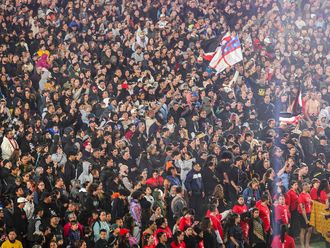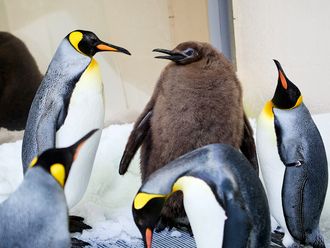It's young, exciting and willing to take risks. It's also fresh, fun and delicious.
But what really makes modern Australian cuisine exceptional is the way it borrows flavours from diverse cultural styles and reinvents itself into a funkier and innovative version.
It's not just its character that's distinct, it's also the confident attitude it exudes. In fact, when asked about the kind of attitude modern Australian cuisine exudes, two of Dubai's respected Aussie chefs have similar beliefs. "It's no-rules and no-boundaries.
It's also adventurous and courageous," says Chef James Viles, Chef de cuisine, Vu's, Jumeirah Emirates Towers.
Chef Ivan Mather of Yalumba, the modern Australian restaurant at Le Méridien Dubai, says, "Our attitude is fresh, adventurous, thinking outside the box, flexible, eclectic and not too caught up in traditional rules."
It's 'thinking outside the box' that has helped famous Australian chefs such as Neil Perry create recipes such as stir-fried mud crabs with curry powder and barbecued veal meatballs with baba ghanoush.
According to Mather, the multicultural flavour of the cuisine is also an important element. "Australian cuisine is innovative. Part of this is due to its newness compared to European and Asian culinary cultures. It also involves the mixing of completely different ethnic traditions. For example, strong Asian flavours such as lemongrass, coriander, chilli and cardamom are often blended into many European dishes."
This cuisine has been heavily influenced by the country's South East Asian neighbours, and by the numerous immigrants settled in Australia from around the world. These factors, says Mather, have allowed chefs to draw from the best these cultures have to offer.
Some cultural influences though are seen more in some parts of Australia. According to Viles, Sydney has a very Asian-influenced market while Melbourne has a European yet urban feel.
Mather says that about 25 to 30 years ago, Australians didn't eat broccoli or salami. These were actually introduced by Italian migrants. "I remember reading a restaurant review 20 years ago of the famous Bewrowra Waters restaurant in Sydney, and they were talking about sun-dried tomatoes, which I had never heard of then. Today, polenta, anchovies and pesto are commonly found in the Australian household, as are lemongrass, ginger, noodles, coriander and chilli.
"Cuisine in southern areas such as Melbourne, often referred to as the 'restaurant capital', tends to favour a heavy European style with Italian and French influences. This kind of food suits the cooler climate. Sydney, in my opinion, a vibrant and less conservative city compared to Melbourne, has some brilliant Asian-influenced eateries, says Mather."
The Asian influences are also evident here due to the city's massive Chinatown and Cabramatta with its huge Vietnamese community and markets.
Australia is a treasure trove of some of the world's freshest and finest produce, seafood and meat that are invaluable ingredients in indigenous and modern Australian cuisine.
Some of the indigenous herbs, vegetables and fruits are lemon myrtle, mountain pepper, quandong, rosella, Warrugal greens (native spinach), bush tomatoes, macademia nuts, wattle seed and desert lime. Seafood found here includes crustaceans and fish such as the Moreton Bay Bug and yabby, mud crabs, blue swimmer crabs, oysters, scallops, trevalla and barramundi. Australian meats, especially beef (Wagyu) and lamb (Victorian), are coveted worldwide. Kangaroo and emu meat can also be found on menus in some restaurants.
Sydney and Melbourne, with their innovative and award-winning restaurants, have become important centres for modern Australian cuisine. "I have been a chef for the past 14 years and still love the freedom and complexity of the restaurant scene in Sydney and Melbourne - it has influenced my beliefs and capabilities to new levels and has taught me to think outside the box," says Viles.
"Sydney has stolen the reputation from Melbourne as the culinary capital of Australia. The catalyst for this is that Sydney is a tourist city with iconic buildings and views, myriad little bays and has a number of small owner operator restaurants springing up. For instance, waterside restaurants such as Bather's Pavilion, Catalina and Icebergs in Bondi give customers a true Sydney experience. Restaurants such as Rockpool and Sailor Thai should not be missed," says Mather.
While the debate about which city has the best restaurants promises to be a long one, a culinary journey through Australia demands several stops.
Viles recommends the following: "I would go to Melbourne first and eat at The Laundry, followed by a dinner at The Flower Drum, which serves modern Asian cuisine. I would then travel through Tasmania eating fresh trout, wagyu beef and oysters. I would save Sydney - the urban utopia - for the last. I would spend a week there enjoying all of its fabulous bars, restaurants, beaches, people and food."
"I would go to the West because I know it well. The Subiaco Hotel in Perth represents great modern Australian cuisine.
The Margaret River region is not only known for its great wine but also for its food. Lunch at Leeuwin Estate is magical," says Mather.
"In Melbourne, I would eat by the sea on the upper level at Stokehouse, Circa in the Prince of Wales Hotel. I would also visit the Botanical Hotel in South Yarra, Flower Drum for the best Chinese and the Supper club in Spring Street tucked away upstairs for a late night cap.
"Heading up to Sydney, Rockpool would be a must for the best seafood in Australia. Other places that cannot be missed include Sailor Thai for its spectacular Thai food; Icebergs in Bondi is groovy and fun with eclectic cuisine and then there is the superb Catalina. Visiting all of these would be quite a culinary journey," he says.
Teriyaki steak with wasabi butter
Preparation time: 30 minutes
Cooking time: 20 minutes
Serves 4
Ingredients
4 Australian beefsteaks (sirloin,
ribeye or tenderloin),
7 ounces each
4 tbsp teriyaki marinade
2 cloves garlic,
crushed
1 hot red chilli, finely chopped
3 tbsp soft unsalted butter
2 tsp wasabi paste
1 tbsp chives, finely chopped
For Asian salad to serve:
1 red onion, halved and thinly sliced
1 punnet baby beans, steamed
8 small radishes, thinly sliced
Mixed salad leaves
Method
Combine the teriyaki marinade, garlic and chilli in a shallow dish. Add steaks and coat with the marinade. Cover and place in the refrigerator for 3-4 hours or overnight.
Combine the butter, wasabi paste and chives and reserve.
Preheat the grill or non-stick fry pan (if using fry pan, coat steaks in a little oil).
Cook the steaks for 3-4 minutes on each side or to your liking. Cover loosely with foil and leave to rest for five minutes.
Place the steaks onto 4 warm plates and top each with one-fourth of the wasabi butter.
Serve with the Asian salad.
To prepare the Asian salad:
Combine all salad ingredients in a bowl and toss well.
- Courtesy:www.australian-beef.com













